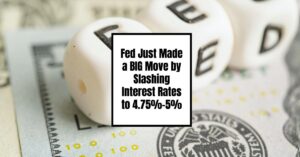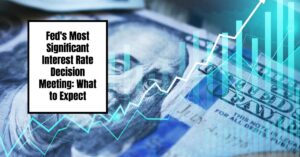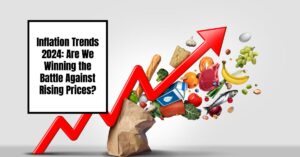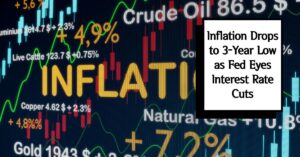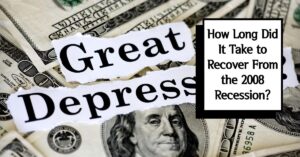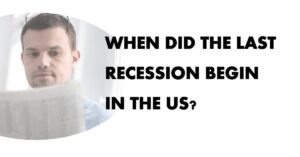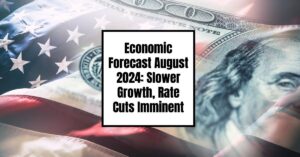After sustaining a 23-year high for over a year, the Federal Reserve has elected to slash the federal funds target rate by 0.50 percentage points, marking the first rate cut since 2020. This decision brings down the borrowing costs from a 23-year high, dropping from a range of 5.25%-5.50% to 4.75%-5%. This significant decrease is set to provide relief in the housing market and affect various sectors of the economy.
Fed Just Made a BIG Move by Slashing Interest Rates to 4.75%-5%
Federal Reserve Rate Change
🏦
Federal Reserve Action:
Target rate dropped by 0.50%
📊
New Rate Range:
4.75% – 5%
💰
Impact on Borrowing:
Expected decrease in loan and mortgage rates
📈
Market Reactions:
Likely positive response from investors and consumers
🌐
Economic Context:
Change follows prolonged high, aims to support growth
The Federal Reserve’s decision, announced this September 2024, has roots in the broader economic trends we have seen over the past year. After previously maintaining rates to combat inflation and other financial challenges, the Fed's recent adjustments signal a shift towards stimulating growth.
Understanding the Federal Funds Rate
The federal funds rate is the interest rate at which banks lend money to each other overnight. This rate directly influences how much consumers pay for loans and credit cards. When the Fed changes this rate, it ripples through the economy. Lowering the rate usually encourages banks to lend more, subsequently increasing spending by businesses and consumers.
For much of the last year, the federal funds rate was left soaring high, with implications for loans, mortgages, and credit. Many struggled with the increased cost of borrowing, which in turn put pressure on consumer spending. As borrowing costs have risen, people were often forced to reconsider big purchases like homes and cars, which posed further challenges for the economy.
Context of the Rate Cut
In a significant move, the Federal Reserve has taken the bold step of reducing the federal funds target rate from 5.25%-5.50% to 4.75%-5%. This reduction reflects an aggressive shift in economic policy aimed at boosting growth amid signs of a slowing labor market and a cooling economy.
Federal Reserve Chair Jerome Powell, in his statement, emphasized the strength of the economy and the progress made over the past two years. He noted the cooling of the labor market from its previously overheated state, suggesting a growing confidence in the economy's ability to maintain its robustness.
Historically, most rate cuts are by 0.25 percentage points, making this half-point reduction a noteworthy action by the Fed. The decision is rooted in the progress made in controlling inflation, which has been a significant concern for the economy.
The annual inflation rate has cooled to 2.5% in August, closer to the Fed's target of 2%, providing them with the maneuvering room to address other economic concerns, such as the health of the labor market.
Interestingly, this decision was not unanimous; one governor preferred a more conservative quarter-point move. However, the majority's stance reflects a stronger confidence that inflation is moving sustainably towards the 2% target and that the risks to achieving the dual mandate of maximum employment and price stability are now roughly in balance.
Consequences for Various Sectors
The implications of this rate cut are far-reaching and can be anticipated across several sectors:
1. Housing Market
Imagine you’re trying to buy a house, but every time you ask about a mortgage rate, the numbers keep climbing higher. This has been the reality for many Americans, with mortgage rates skyrocketing to highs not seen in two decades. But finally, there’s a change in the air. One of the areas most impacted by the cut will be the housing market.
Lower interest rates mean that mortgages will be cheaper. Individuals looking to buy homes may find more favorable loans, increasing home sales and possibly stabilizing home prices that have suffered recently due to high-rate environments. Homebuilders and real estate developers might also see a boost in activity as potential buyers enter the market.
2. Consumer Loans
Auto loans, personal loans, and credit card rates are closely tied to the federal funds rate. With the reduction, consumers might see lower rates, making it easier for them to finance purchases. This change could lead to increased spending, thus positively impacting the retail sector. The easing of borrowing costs could increase discretionary spending on items like electronics, vacations, and home improvements.
3. Business Investments
For businesses, cheaper loans could encourage capital investments. Companies may be more inclined to take out loans to expand operations, purchase new equipment, or even increase hiring. This can lead to a more robust job market, which is crucial for a healthy economy. Increased business confidence can likewise result in new startups and innovation in various sectors.
4. Stock Market
Typically, when the Fed cuts rates, stocks tend to rise. Investors often feel more optimistic about the future economic environment, leading to increased investment in equities. The initial reactions from the stock market show a positive inclination towards the Fed’s decisions. Engaging in stock buybacks or increasing dividends aligns with higher market perceptions.
Focus on Employment and Economic Growth
The Fed's move also suggests a shift in focus back to the maximum employment mandate, indicating a significant improvement in confidence regarding inflation progress. This is somewhat surprising given the incoming inflation data, as it suggests that the Fed may be more concerned about the state of the labor market than most analysts had anticipated.
The timing of the rate cut, just weeks before the presidential election, adds a political dimension to the economic debate. It raises questions about the independence of the Federal Reserve and the potential influence of political pressures on monetary policy decisions. Some may argue that this move is a strategic action to bolster economic confidence ahead of a critical political event, which can have mixed implications for public perception and trust in the Fed.
As the economic outlook remains uncertain, the Fed's decision to cut rates by half a point is a clear indication of its proactive stance in supporting the economy. With further rate cuts anticipated at the final two meetings of the year, the central bank is poised to continue its efforts to maintain economic stability and growth.
Public and Expert Opinion
The public's reaction to the rate cut has generally been positive, reflecting a cautious hope for a revitalized economy. However, economists and financial experts have varied opinions on the sustainability of this approach. Some believe that the cuts should have happened sooner, while others caution against potential overheating in the economy.
My Opinion on this Historic Rate Cut
I believe that the Federal Reserve's decision to reduce the federal funds target rate is a strategic move in favor of growth. It’s important to remain vigilant against rising inflation, but stimulating demand through lower borrowing costs could lead to a more balanced economic recovery.
FAQs About the Federal Reserve Rate Cut
1. What does the federal funds rate mean for everyday people?
The federal funds rate influences the interest rates that banks offer consumers on loans and credit. When it decreases, it often leads to lower rates for mortgages, personal loans, and credit cards.
2. How does a rate cut help the economy?
Lower interest rates encourage borrowing and spending. When consumers and businesses feel confident about accessing credit at a lower cost, they are more likely to invest and spend, which can stimulate economic growth.
3. Is this the first time the Fed has cut rates in 2024?
Yes, this rate cut is notable as it is the first since 2020. The Fed is responding to current economic conditions that suggest a need to stimulate growth.
4. Could this rate cut lead to inflation?
While lower rates are designed to encourage spending, if it leads to excessive spending without corresponding increases in production, it could rekindle inflation. The Fed must monitor economic conditions after the rate cut to avoid overheating the economy.
5. What are the future implications of this rate cut?
The decision could set a precedent for additional rate cuts if inflation remains under control and the labor market shows signs of further slowing. The Fed’s future actions will depend on the economic data released in the coming months.
Looking Ahead
In summary, the Federal Reserve’s recent move to slash the federal funds target rate by 0.50 percentage points marks a pivotal moment in ongoing monetary policy. The effects of this action are expected to ripple through numerous sectors as banks begin to adjust their lending practices. While optimism is in the air, the balance of growth and inflation will remain a pivotal issue for the Federal Reserve as we head into the final months of 2024.
As the global economy continues to navigate through uncertainties, the Federal Reserve's latest move will be closely watched by market participants and policymakers alike. The full impact of this rate cut on the economy, inflation, and the labor market will unfold in the months to come, providing a clearer picture of the efficacy of the Fed's current monetary policy strategy.
Also Read:
- Market Reactions: How Investors Should Prepare for Interest Rate Cut
- How Low Will Interest Rates Go in 2024?
- Interest Rate Predictions for the Next 3 Years: (2024-2026)
- Interest Rate Predictions for Next 2 Years: Expert Forecast
- Impact of Interest Rate Cut on Mortgages, Car Loans, and Your Wallet
- Interest Rate Predictions for Next 10 Years: Long-Term Outlook
- When is the Next Fed Meeting on Interest Rates in 2024?
- Interest Rate Cuts: Citi vs. JP Morgan – Who is Right on Predictions?
- More Predictions Point Towards Higher for Longer Interest Rates
